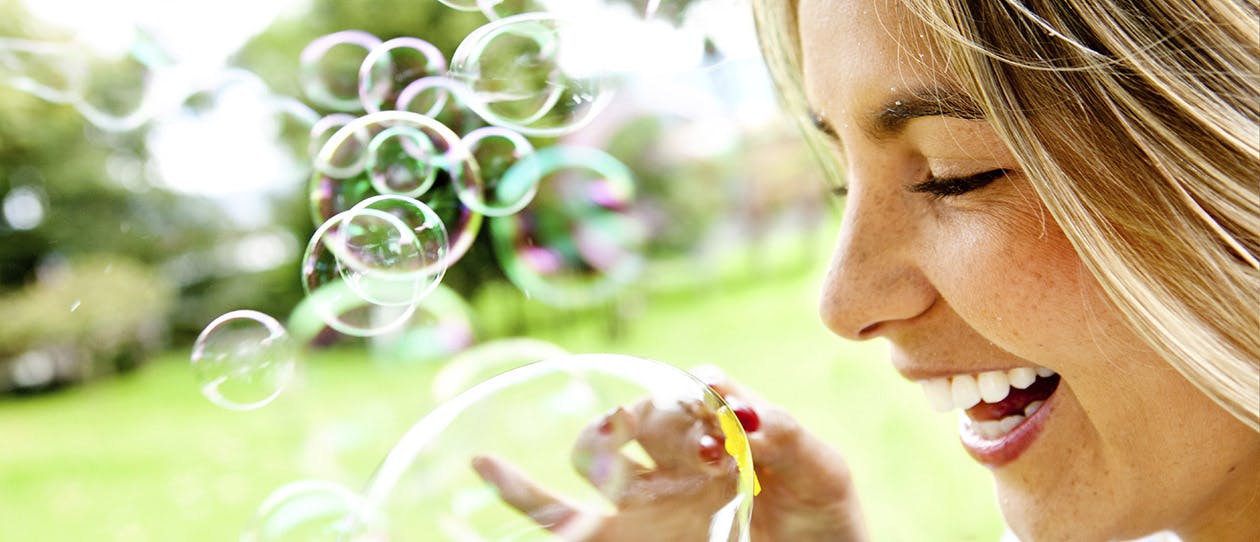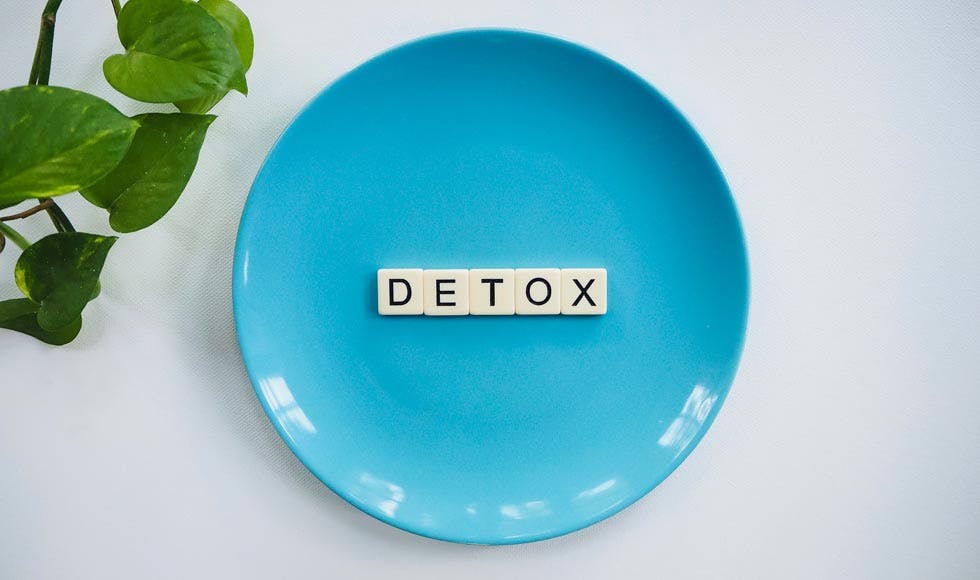
- Health hub/
- Weight management/
- Countdown to summer: lose weight and feel great


Day 1: Motivation and mindset
Goal: Take one small step today, and one giant leap for your health and body shape
Taking one small step is where every great journey begins. While you tend to hear a lot about where a journey starts and where it ends, it's the small steps along the way that get you there. You are about to embark on a journey to a better body and better health, so congratulations on starting.
Today, simply make a commitment to yourself to concentrate on mastering one thing at a time. Try to pick out at least one weight-loss strategy or thinking habit to adopt each day or each week. Don't try to do too much too early because you'll get better results by focusing on only one or two things at a time. One step leads you closer to the next. Try to fight that little part of yourself that wants to know it all now, start like a bull at a gate, and have results by yesterday. Haven't you tried that before without much success? For the rest of your journey, concentrate on mastering one thing at a time.
Day 2: Good Food
Goal: Make food the solution, not the problem
Whether you are concerned about losing fat, or just maximising your health and vitality, food is the key ingredient. Eating good food will increase your chances of getting great results. Healthier eating is not about perfection, or lettuce leaves. Healthy eating can still be enjoyable. As you become accustomed to it, healthy eating can become one of life's true pleasures.
Learn to get control over food instead of letting it control you. There are no good foods or bad foods, but there are some foods that I encourage you to eat more of, and some to eat less of. Try these strategies to begin with:
- Plan your meals
- Shop to a list
- Freeze healthy meals so they're easily available
- Keep a food diary
- Aim for a lifetime eating plan, not a diet
- Involve your immediate family (the people you eat with regularly)
- Manage your stress, and find ways to relax
- Create a no-fail, no-willpower required healthy environment at home
- Don't deprive yourself of anything, just use small portions of treats
- Start with small dietary changes and build week by week
Day 3: Motivation and mindset
Goal: If you eat it, burn it. If you drink it, earn it
Get a grasp of this slogan above and you'll go a long way towards getting a handle on the key ingredient to losing weight and fat. That ingredient is changing your energy balance (or kilojoule balance). Whatever kilojoules you eat or drink, you need to burn off, and then a little extra. The problem I see regularly is that when people hear the words ‘energy balance' or ‘kilojoule balance', they switch off. No matter how important it is, there just doesn't seem to be any relevance. So to keep things practical, try to remember: ‘If you eat it, burn it. If you drink it, earn it'. Burn off any extra kilojoules you eat, and earn any extra kilojoules you drink. Get this right and your fat cells will have no choice but to get smaller.
If you burn off more kilojoules than you consume on at least four days out of every seven, more often than not you will be removing stored body fat. But try to be aware of your kilojoule balance on a daily basis and make adjustments to your kilojoule intake and expenditure to keep it under control.
Some changes to reduce your kilojoule intake:
- Fill out your meals with water-rich vegetables
- Add spice to your lunches and dinners
- Drink water before and during your meals
- Reduce your alcohol intake or have alcohol-free days
- Cut out fruit juice, or at least water it down
- Have low carbohydrate dinners, or at least use low GI carbohydrates
Day 4: More more
Try not to miss more than two days in a row of exercise
How much exercise is enough? Until recently, it was thought 20 minutes of physical exercise three times a week was all that was needed for good health and weight control. While anything is better than nothing, we now know that this is not enough to derive health benefits let alone significant weight loss. To lose weight you need to send a consistent message to your fat cells that they are not needed. If you can exercise at least four days a week, that means you are active more than 50 per cent of the time. If you can exercise more, that will send an even stronger message that your body can adapt to. By exercising every day, or at least every second day, you will increase your chances of getting results.
Do your best to exercise four to seven days each week to maximise your chances of getting results. Avoid missing two days in a row of exercise.
Day 5: Good food
Keep your portion sizes under control
Do you eat pretty well but struggle to lose weight? It's possible you are eating too much. Portion size is vital for weight control because the bigger your serving, the bigger your kilojoule intake. Studies show that most people eat more than the recommended serving sizes for many foods, with an estimated 600 additional kilojoules consumed today beyond the average from just 20 years ago. People also tend to eat what's put in front of them. One study showed that when two groups had access to unlimited lasagne, the group who received a large portion ate more than the group who first given a small portion, even though both groups were allowed to get up for more.
Following are some strategies to help reduce your portion sizes and get the maximum fullness from your foods with the least amount of kilojoules
- Slow down – people who eat slower tend to eat less
- Eat well – Unprocessed foods are absorbed slowly, making you feel fuller for longer.
- Drink water – Water can fill your stomach and take the edge off hunger.
- Eat less more often – Spread your kilojoule intake over the day.
- Use the 10-minute rule – Wait 10 minutes if you ever want seconds; the craving may pass.
Day 6 – Move more
If you are trying to convince yourself that you don't need to exercise today, remember this
There will always be days when you don't feel like training, but remember that exercise can do a lot more than help you to lose weight. The benefits include a stronger heart and lungs, increased bone density, reduced risk of heart disease and cancer, and increased longevity. That's all well and good, but it's hard to get motivated by things that take time to materialise. This is why it helps to focus on what exercise can do for you today. Even just 10 minutes can offer benefits, and once you actually start, you might even feel like doing it a little more. That's why they say the hardest part is just putting on your exercise gear. Once you are actually out there moving, you can almost guarantee you'll feel better for it or feel glad that you did it when you've finished.
If you ever experience days when you don't feel like exercising, check out what exercise can do for you today:
- Makes you more energetic and revitalised
- Lowers mental and muscular tension
- Helps you feel good about yourself, knowing you have done something today to achieve your health and fat-loss goals
- Shows your new level of resolve, that this time you will get the results you seek
- Improves your ability to fall asleep and sleep well
- Increases your ability to concentrate and think faster
Day 7 – Good Food
Fill up on fibre
Dietary fibre is vital for health and weight control, yet most Australians only consume around half their daily fibre needs. Research has shown that increasing your fibre intake can reduce the absorption of fat from other foods. Volunteers doubled their daily fibre intake to 36 grams, reducing the absorption of fat in their diet by up to 131 calories (550 kilojoules). Fibre can also help you lose weight because it fills you up, it's low in kilojoules, it decreases the room for fatty foods and it improves control of your blood sugar levels (requiring less insulin).
Fibre can only be found in plant foods; it's recommended that adults consume 30g a day. Here are some ways you can increase your fibre intake:
- Have a bran-based, high fibre breakfast cereal
- Sprinkle wheatgerm, wheat bran, oat bran, barley bran or rice bran on your breakfast cereal
- Substitute some of the meat in meals with extra vegetables and/or some large varieties of legumes
- Choose wholegrain or wholemeal options for bread, flour, rice and pasta
- Try to snack on high fibre foods like baked beans, fruit and breakfast cereals
- Eat the skins of fruit and vegetables like carrots, potatoes, apples and pears




